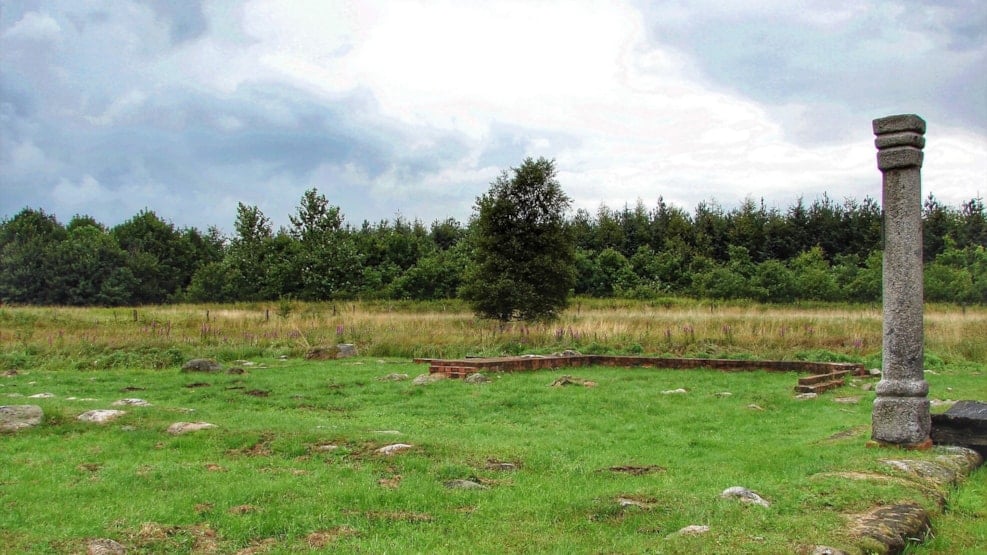
Grøngaard - castle ruin - Tønder
Only a few stones testify to the castle.
By the middle of the 16th century, the area east of Tønder was still rich in forest. From here, enormous quantities of wood were fetched for the marsh dam, which was initiated by Duke Hans the Elder, a brother of King Chr. III. For himself, the hunting-loving duke built a small hunting castle around 1570 at his farm Grøngård, Lusthus Thom Gronenhagen.
It was laid in an artificial lake through which one of the area's many streams was passed. After Duke Hans' death in 1580, the castle was only rarely used, and in the middle of the 17th century, the small magnificent building was sold for demolition. The castle's place was proved in 1946 by head teacher V. Leick, Lydersholm. The ruin was examined in 1953-54 and 1960 by the National Museum and exposed 1976-81 by the Danish Conservation Agency in collaboration with Tønder Municipality.
Grøngård Castle was, by all accounts, a highly unusual building, whose role models must be sought in contemporary Italian-French architecture. The castle's architect was probably Hercules von Oberberg, the creator of the similarly disappeared castles in Haderslev and Tørning. The three floors of the castle were above the granite plinth built of red bricks with classically correct details in Gotland sandstone. The steep pyramid roof was probably covered with flat tile slabs, beaver tails of the four corner towers and finished with small lead spires. In the middle of the north façade, a staircase protruded.
The main façade with the access bridge to the south seems to have been provided with a column-supported gallery. From here the peculiar pillar is thought to originate, which is now erected next to the bridge; it must have originally been used in an older building. Samples of the castle's architectural decoration and distinguished equipment can be seen at Tønder Museum.